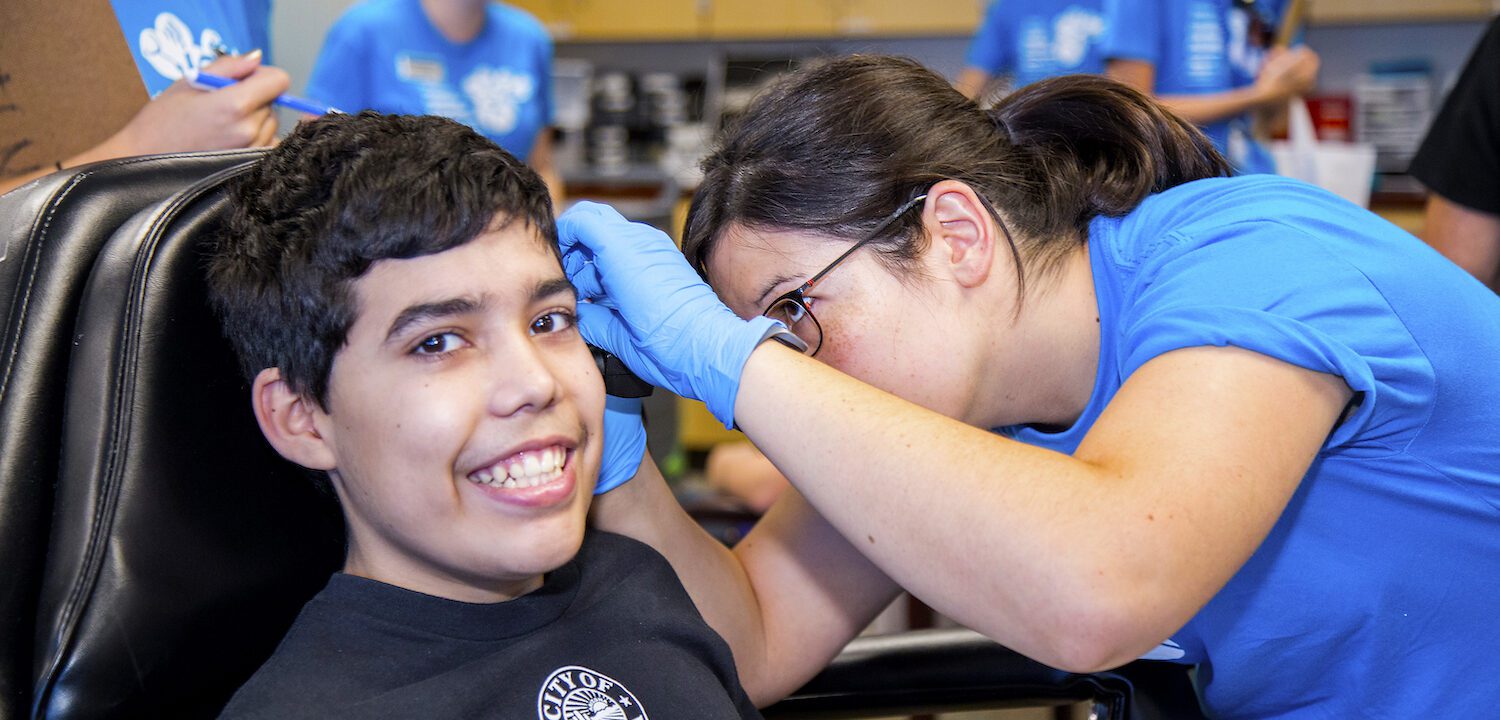
How Is Down Syndrome Diagnosed?
How Is Down Syndrome Diagnosed?
Down syndrome, a genetic condition caused by the presence of an extra copy of chromosome 21, can be diagnosed during pregnancy or after birth. Down syndrome is a recognizable condition that affects around 5,100 babies born in the United States each year. The condition is often characterized by recognizable physical, behavioral, and cognitive symptoms of down syndrome. Prenatal and postnatal diagnostic methods play a crucial role in determining whether an individual has Down syndrome. The Special Olympics Arizona team is breaking down the diagnosis process for Down syndrome and exploring the various ways in which Down syndrome is diagnosed, both before and after birth.
Prenatal Screening Tests
Prenatal screening tests are non-invasive methods used to estimate the likelihood of a baby having Down syndrome. Many mothers will have prenatal screening done to screen for various conditions, including Down syndrome, that could affect their baby and their birth. They are typically performed during the first and second trimesters of pregnancy, and these are often routine tests that will be completed whether or not a mother has any concern or is at an increased risk for having a baby with Down syndrome.
First Trimester Screening
During the first trimester, an ultrasound and blood tests will be the most common screening methods that can be used in a Down syndrome diagnosis. In a diagnosis of Down syndrome, an ultrasound is used to measure the thickness of the back of the baby’s neck, known as the nuchal translucency. Increased thickness can be an early indicator of the disorder. A maternal blood test, typically measuring the levels of two substances (PAPP-A and hCG), will be performed during the first trimester. Abnormal levels may indicate an increased risk of Down syndrome.
Second Trimester Screening
In the second trimester, a quadruple screen measures the levels of four substances in the mother’s blood, including alpha-fetoprotein, hCG, estriol, and inhibin A. Deviations from the expected levels may suggest an increased risk of Down syndrome, prompting doctors to undergo further testing.
Integrated Testing
Integrated testing combines results from both the first and second trimester screenings. The first trimester screenings of the results from the blood test measuring PAPP-A and the ultrasound to measure nuchal translucency will be combined with the results of the second trimester quad screen measuring the alpha fetoprotein, estriol, HCG, and inhibin A in the blood to provide further information about the baby. This approach offers a more comprehensive assessment of the risk of Down syndrome.
Cell-Free Fetal DNA
A relatively new and highly accurate test, cell-free fetal DNA screening, analyzes fragments of fetal DNA in the mother’s blood. It can detect chromosomal abnormalities, including Down syndrome, as early as the first trimester.
Prenatal Diagnostic Tests
When prenatal screening tests indicate an increased risk of Down syndrome or you know you are at a higher risk of having a baby with Down syndrome, diagnostic tests may be recommended to confirm the diagnosis. These tests carry a slight risk of miscarriage and are typically more invasive than screening tests, and discussing concerns with your healthcare provider can help you weigh the pros and cons of undergoing these diagnostic tests. These tests include:
Amniocentesis
Amniocentesis involves the withdrawal of a small amount of amniotic fluid, which contains fetal cells, that can be withdrawn through a needle being inserted into a mother’s uterus. These cells can be analyzed to determine the number of chromosomes in the fetus and can also be used to identify other chromosomal problems or genetic diseases, such as cystic fibrosis, Tay-Sachs disease, and sickle cell disease. This test is usually performed in the second trimester, after the 15th week of pregnancy, and this test carries a very low risk of miscarriage. This is the most common type of diagnostic testing that is done prenatally to identify chromosomal problems in a fetus.
Chorionic Villus Sampling (CVS)
CVS is another diagnostic procedure that works by taking samples of tissue from the placenta to analyze fetal chromosomes. It can be performed in the first trimester, typically between 10 and 13 weeks of pregnancy. This test carries a low risk of pregnancy loss.
Percutaneous Umbilical Blood Sampling (PUBS)
PUBS, also known as cordocentesis, is performed by drawing a small amount of fetal blood from the umbilical cord. It is the most invasive of the prenatal diagnostic tests and is typically reserved for situations where other test results are inconclusive or further information is needed.
Diagnosis of Down Syndrome After Birth
In some cases, Down syndrome is not diagnosed prenatally, and the diagnosis occurs after the baby is born. Diagnosis is based on physical characteristics and the results of a chromosomal analysis, typically done through a blood test called karyotyping. The genetic analysis confirms whether the baby has an extra copy of chromosome 21. If the baby does have an extra copy of chromosome 21, they will be diagnosed with Down syndrome.
Early diagnosis of Down syndrome is essential for families to prepare for the unique needs of a child with this condition and to access appropriate support and medical care. Prenatal screening tests offer parents the opportunity to make informed decisions about their pregnancy, while postnatal diagnosis ensures that necessary interventions and therapies can begin as early as possible. Diagnostic methods continue to advance, providing expectant parents with more accurate information and options for their child’s care. The earlier a diagnosis is done, the more information parents can gather and the earlier interventions can begin. If your child is diagnosed with Down syndrome, it is recommended to discuss the significance of the result with experts on the condition, including geneticists as well as your doctor. The Special Olympics Arizona team offers resources for parents and children with Down syndrome, including information on treatments and options for support and community building with peers and parents who understand the condition.



